The spider
Web and silk
There are several glands located at the spider's abdomen,
which produce the silken thread. Every gland produces a thread for a special
purpose. There are seven different known glands. Each spider possesses only
some of these glands and not all seven together.
The glands known as:
Glandula Aggregata produces the sticky material for the threads.
Glandula Ampulleceae major and minor are used for the silk of the walking
thread.
Glandula Pyriformes is used for the production of the attaching threads.
Glandula Aciniformes produces threads for the encapsulation of prey.
Glandula Tubiliformes produces thread for cocoons.
Glandula Coronatae is used for the production of the adhesive threads.
Normally a spider has three pairs of spinners, but there are spiders with
just one pair or as many as four pairs. Every spinner has it own function.
There are small tubes in the spinners, which are connected to the glands.
The number of tubes varies between 2 and 50.000. |
 |
| |
Spinners of Steatoda grossa |
|
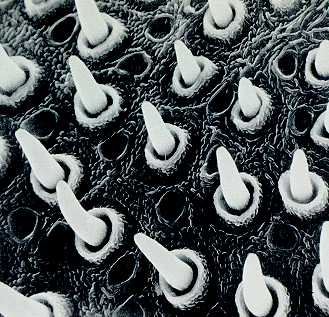
|
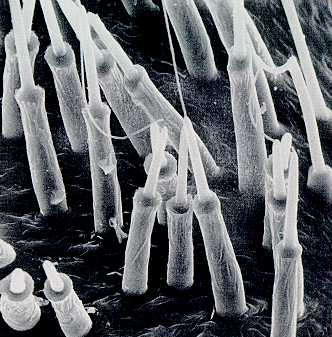
|
|
Spinners (7) |
The human eye is capable of detecting objects at a
distance of 10 cm with a diameter of 25 mm. The
average diameter of a thread in a orb web is around 0.15
mm. The smallest measured thread was only 0.02 mm
thick. We are able to see the web only because of the reflection of sunlight
on the thread. These thin wires are capable of stopping a bee flying at full
speed. This thread is not only strong but also very elastic. These
properties make the material very tough.
What is the thread made of? It is a protein of a molecular mass of
30.000 Dalton in the gland. Outside the gland it polymerizes to a
molecule named fibroin with a molecular mass of around 300.000 Dalton.
It is still not clear what activates polymerization process. |
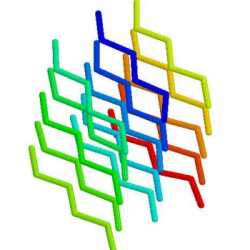
|
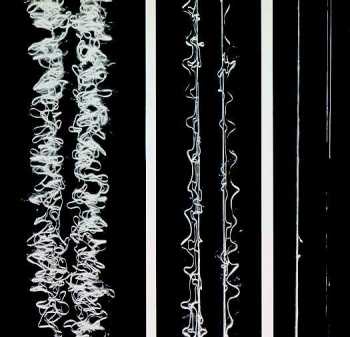
|
| |
Fibroin |
Stretching of silk, 1, 5 and 20 times.(7) |
 Fourth
leg of a cribellate spider Fourth
leg of a cribellate spider |
|
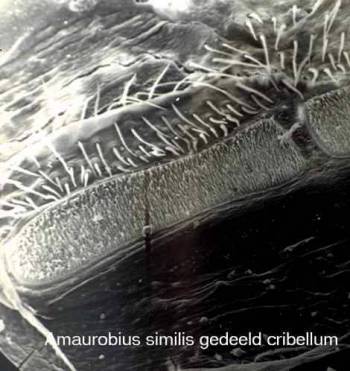
|
Why does the silk made of protein not decompose by fungi and bacteria
like all other proteins? We conserve protein by cooking, salting, drying
or adding acid. In spider silk there are three substances that are
important for its durability: pyrolidin, potassium hydrogen phosphate and
potassium nitrate. Pyrolidins can be found in dyes and plant poisons and
are very hygroscopic (binds water). This substance prevents the thread
from drying out. Pyrolidin is also found in high concentration in the glue
of catching threads. Potassium hydrogen phosphate makes the thread acidic
and prevents fungal and bacterial growth. A low pH causes denaturation
(become insoluble) of proteins. A phenomenon we can observe in sour milk.
Potassium nitrate prevents this and the proteins are salted which prevents
bacterial and fungal growth.
The thread of the orb web spider Araneus diadematus is very
elastic and can be stretched 30 - 40% before it breaks. Steel can be
stretched only 8% and nylon around 20%. In the picture one can see the
thread of the spider Stegodyphus sarasinorum that, because of its
weaving technique, can be stretched up to 20 times it original length.
A lot of orb weaving spiders recycle their webs. The weaving of a
web takes up a lot of the spider's resources. Since they need to renew
their web regularly, they eat the silk to utilize the protein. Only
the main thread of the web is left intact. They usually weave a new
web each morning, unless there has been little activity and the web
can be easily mended. |
|
Cribellum of Aumaurobius similis (bg) |
By studying their threads two groups of spiders can be recognized, the
Cribellate and the E-cribellate spiders.
Cribellate spiders comb their silk to a woolly structure. To do this they have a
comb (calamistrum) on the metatarsus or the tarsus of the fourth legs and an
extra silk producing organ (cribellum) just in front of the spinners, which
appears as a transparent plate. The comb pulls the silk out of the cribellum and
the silk is combed to a woolly structure. The combed silk is made up of
thousands small threads enforced by some thicker ones. There is no glue on the
threads but the insect gets stuck with the hairs on their body in the silk. The
thicker threads in the silk prevent the insect from tearing the silk.
 |
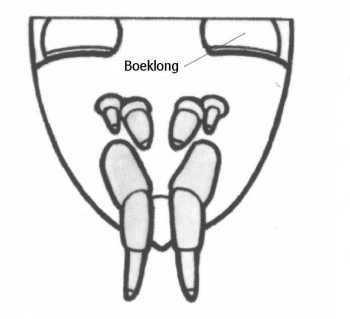 |
Cribellate spider (13) |
E-cribellate spider (13) |
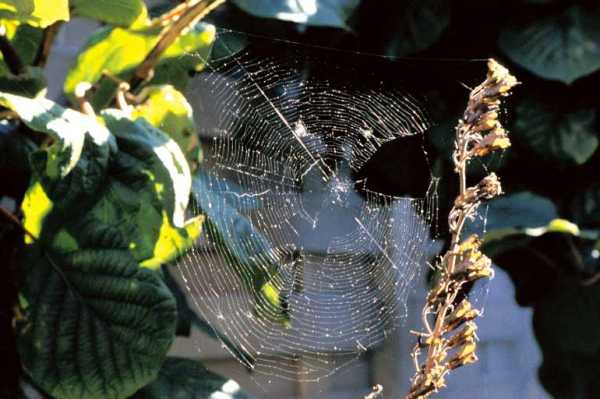 |
Applications of spider silk
Spider silk was and is used for several applications. Polynesian
fishermen use the thread of the golden orb web weaver Nephila as
fishing line. In the New-Hebrides spider web was used to make nets for the
transportation of arrow points, tobacco and dried poison for the arrow
points. Some tribes in New-Guinea used webs as hat to protect their head
from the rain.
During World War II the threads of Araneus diadematus, Zilla atrica,
Argiope aurantia and other orb weavers were used as hairs in measuring
equipment. The Americans used the threads of the black widow (Latrodectus)
in their telescopic gun sights.
In 1709 a Frenchman, Bon de Saint-Hilaire, demonstrated the possibility
of making fabric from silk. Many cocoons were boiled, washed and dried and
the thread was collected with fine combs. Some socks and gloves were
produced. A study to the economic yield of this method revealed that this
would never be profitable. It was calculated that 1.3 million spider cocoons
were needed to produce one kilogram of silk. |
| Orb web of Araneus diadematus |
|
In Madagascar there were some attempts to milk Nephila's for the
production of silk. A thread was pulled out of the spinner of the spider by
hand. If the spiders silk was exhausted, she was put back in the forest and
the next spider was milked. The gathered silk had a beautiful golden color.
This project was also banned because of many problems. |
Spider silk is very strong and tough material.
A thread with a radius of 3 cm can stop a Boeing 747 in full flight. |
|
The web
Three simple forms of web can be recognized. The sheet web, the orb
web and the spatial web.
The most well known form is the orb web. How is this web constructed?
The most difficult part is the construction of the first thread. This is
a sturdy horizontal thread on which the rest of the web is hanging. How
does the spider connect this thread between the two connecting points?
She can not fly. Does she connect a thread at one place, walk down with
an enrolling thread behind her to the other side where pulls the thread
horizontal and connects it?
No, the answer is simpler. She makes use of the wind and some luck. |
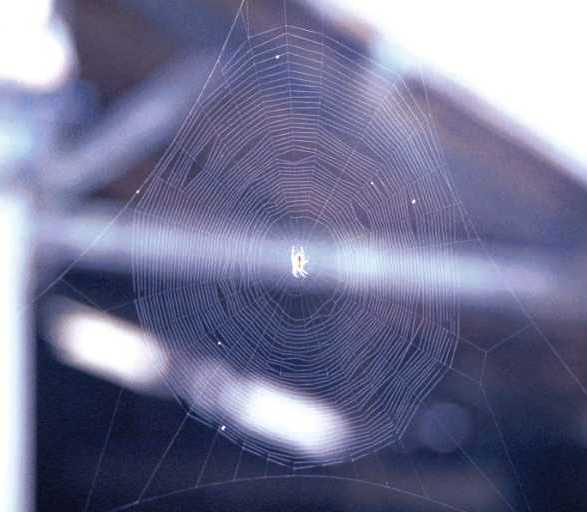
|
| |
Orb web of Araneus diadematus |
Pictures courtesy of
Samuel Zschokke Film of the construction of a
web
The wind carries a thin adhesive thread released from her spinners while
making the thread longer and longer. If she is lucky the thread sticks to a
proper spot. Then she walks carefully over the thread, strengthening it with
a second thread. This is repeated until the primary thread is strong enough.
After this, she hangs a thread in the form of a Y below the primary thread.
These are the first three radial of the web. More radials are constructed
taking care that the distance between the radial is small enough to cross.
Then non-sticky circular construction spirals are made. The web is completed
when the adhesive spiral threads are placed. While the sticky spirals are
placed the non-sticky spirals are removed. Not every web is constructed in
this way; a lot of variations are possible.
The web on the pictures above has an inverted Y that was connected to an
electrical wire 10 meters higher.
Besides the orb webs other catching web designs are used. A particular
one is that of the net-casting spider Deinopsis. This spider
constructs a web between her forelegs and hangs head down waiting for an
insect to pass. The web is thrown over the victim and entangles it.
The Bolas spider also has a special catching technique. As the name may
suspects she throws the thread with an adhesive bubble at the end to her
prey. The prey is decoyed by chemical substances (pheromones). |
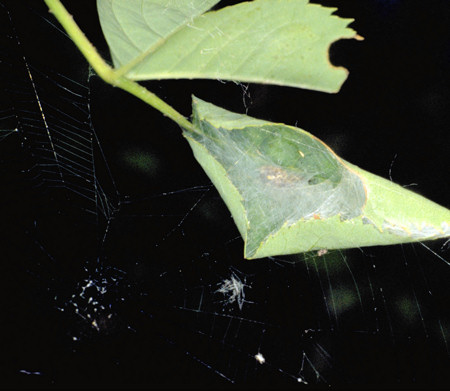
Hiding place in leave and on the right side her orb web of Singa
nitidula. |

hiding place of a male and female Cheiracanthium erraticum
|
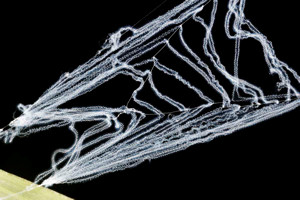
Web of net-casting spider Deinopsis.
|
|
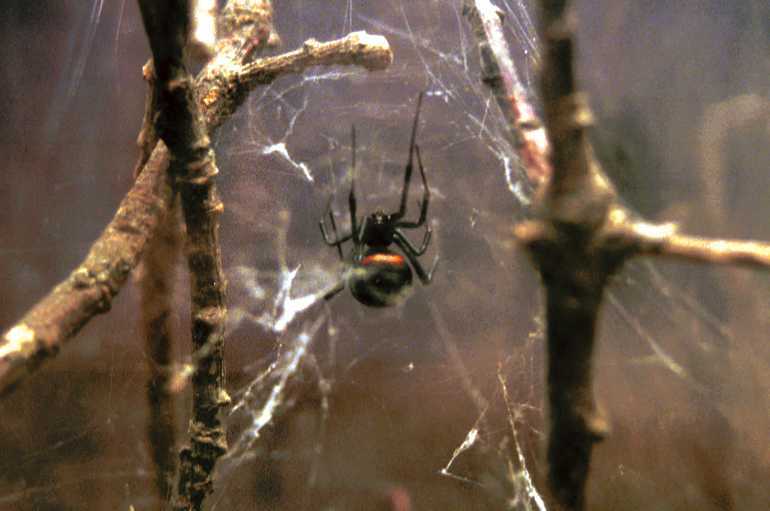
|

|
|
Spatial web of the Therriid Steatoda paykulliana |
Sheet web of the funnel weaver Agelena canariensis |
Hiding place
Funnel weavers construct horizontal mats and wait in a funnel at the
end of the web for an insect to land on the sheet. The
trapdoor spider hides in a tunnel that can be closed with a door. If the
prey walks over a signal thread the door is opened and the spider grabs it.
Besides the flat, two-dimensional orb web the Linyphiidae and
Theridiidae, the family to which the black widow belongs, use
three-dimensional space webs. Linyphiidae makes a horizontal
dense sheet web with a lot of non-adhesive threads above it. If an insect
flies against a thread it tumbles onto the mat and is grabbed. The
Theridiidae construct a messy space web in which the prey gets
entangled. |
 |
 |
Spatial web of the sheet web spider Frontinella.
Life line
Spiders like the jumping spider, the lynx spider, the crab spider and
many others do not use webs to catch prey. They use their eyes and speed
to catch insects. The above mentioned spiders use their silk as a life
line. While moving they release a thread that is attached to a secure
spot. If they accidently fall down the life line makes it possible to
return to their original position.
Lynx spider Oxyopes quadrifasciatus with a line line.
Below the crab spider Ozyptila praticola with a life line |
Transport
Spider can also use their silk for transportation. To reach other places
spiders can fly by wire, called "ballooning ". The spider
raises her abdomen and releases a thread in the breeze that grows longer and
longer until the upward lift is sufficient and the spider is lifted. They can
reach heights of up to 10000 meter and are transported to every spot on the
world. They are often one of the first inhabitants of a devastated area like
after the eruption of the Krakatoa in August 1883. In May 1884 scientist already
reported microscopic spiders spinning their webs.
Gossamer is connected with ballooning and the word comes from
"goose summer". It is the moment that millions of spiders are taking off or
landing.
Bridging is a kind of ballooning but for shorter distances.
Often in the morning when the light is right, one can see thousands of tiny
threads between plants. this can be the dragline of a spider that jumped between
the plants but when the 'bridge' is wider than 10 cm the spider did not jump but
the line was probably from a young or tiny spider that used the silk line to
make a bridge between the plants.
Next: --> Sex and reproduction
Ed Nieuwenhuys, 23 march 2023
December 2018, December 2011,April 31, 2008, March 23, 2008, January 2008, May 2007,January
2006





 Fourth
leg of a cribellate spider
Fourth
leg of a cribellate spider





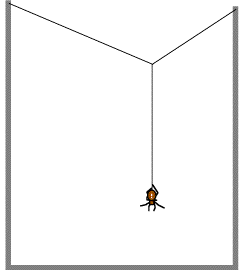


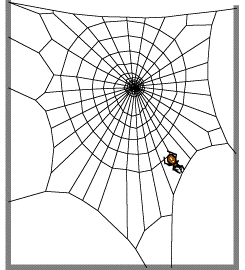
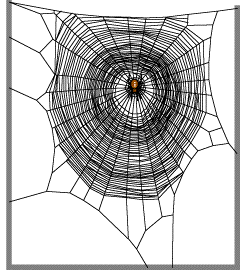









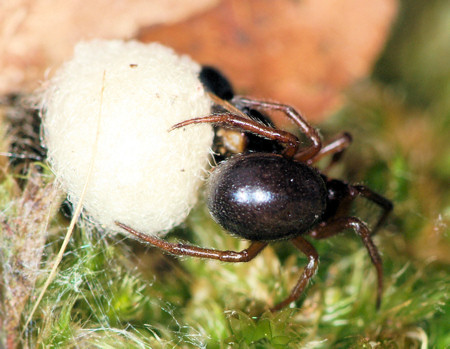
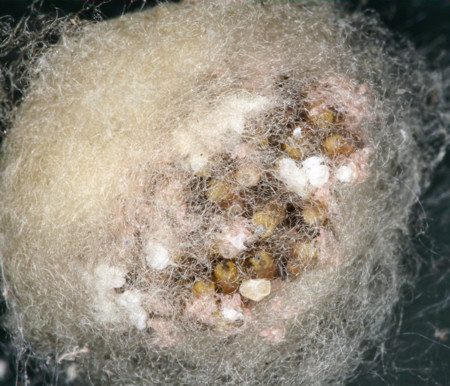
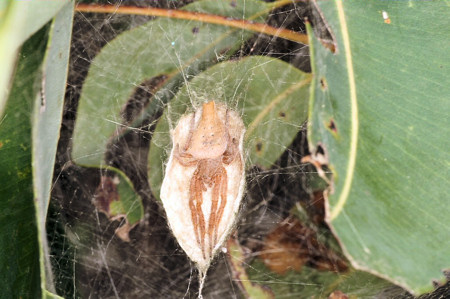
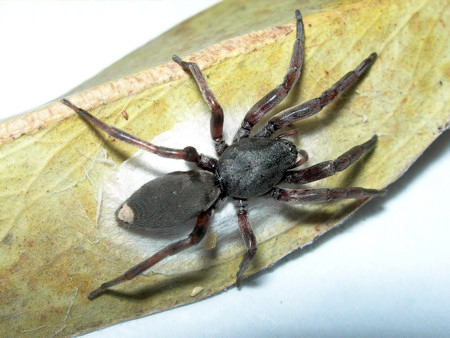
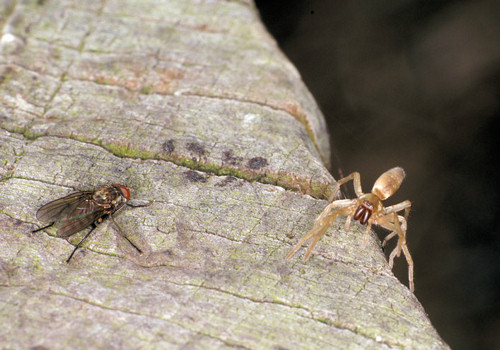
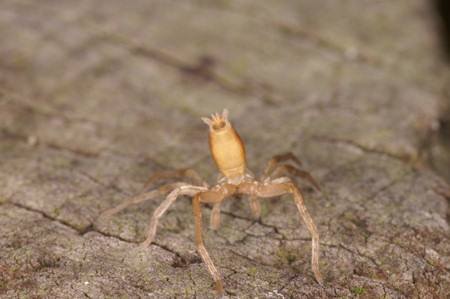
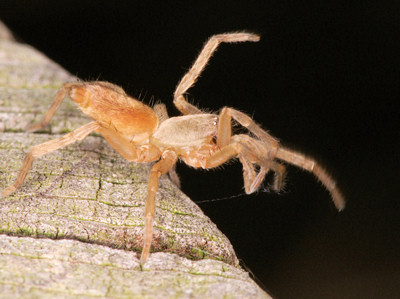


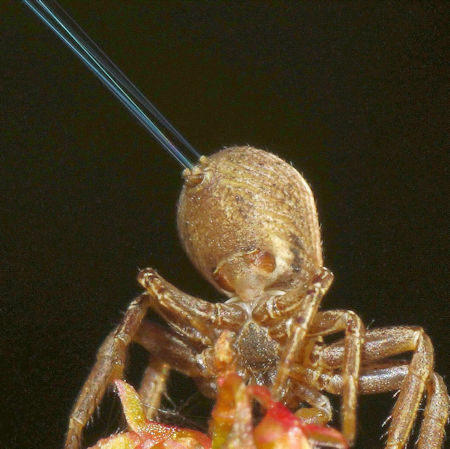 A
spider just before ballooning in the air. Photo Hans Jonkman
A
spider just before ballooning in the air. Photo Hans Jonkman